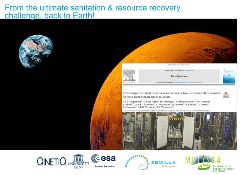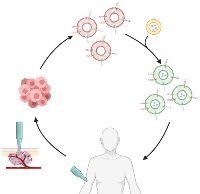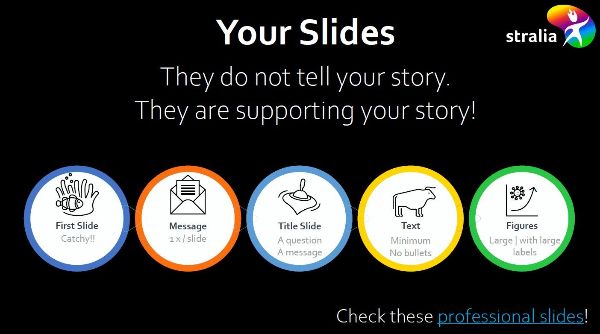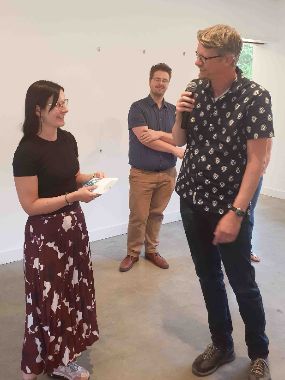|
|
|
| Pro2Tech Annual Event 2023 |
|
|
|
Pro2Tech Mission
(what do we do and what are our objectives) |
To advance the fields of Process and Product Engineering through Cutting-Edge Scientific Research and Development
We focus on:
- scalable and sustainable technologies
- to tackle major societal challenges
- that have the potential to make a huge impact
|
|
|
|
|
|
|
|
Pro2Tech strategy
(how do we reach our objectives?) |
We foster a dynamic and proactive team culture that incubates high-risk, high-gain research programs and ideas, guiding them to maturity.
Multidisciplinary PIs collaborate and develop novel enabling technologies, pushing the boundaries of what is possible and ensuring a sustainable future for all. |
|
|
|
|
|
|
|
| Themes and enabling technologies |
We plan to focus on three specific themes...
- Next Generation Heat (NextGenHeat)
- Future of sanitation
- Scalable personalised (cancer) medicine
...and a number of enabling technologies
- Separating and recycling
- Modelling
- Sensors
- Materials development
|
|
|
|
|
|
|
|
| Developments in enabling technologies |
Separation and recycling, Lorenzo Botto
Dr. Lorenzo Botto has shared his opinion on current research related to separations and recycling within the Process & Energy department, starting from his own research on the fluid dynamics of carbon nanomaterials and delving into separations processes used to extract graphite and lithium from spent batteries. The discussion that followed the speech focussed on the need to account for severe cost constrains if battery recycling is to be implemented on large scales.
Modelling, Dingena Schott and Wim-Paul Breugem
We are able to model powders, granular materials and complex flows with high spatial and temporal detail to improve equipment performance. For design optimisation we need fast models, and for process control we need even faster models but also better data. This requires development of new smart sensor techniques capable of capturing physical properties, material behavioural characteristics and process performance metrics.
Sensors, Alina Rwei
Sensors that can produce real-time, high quality data are key for the realization of next-generation processes. Our ability to understand and control current processes are limited by the fact that the structural, chemical, and biological information of process streams remain widely unknown. Such information is essential to realize the vision of Industry 4.0, to maximize process efficiency while safeguarding product quality. This calls for the innovation and development of new sensor technologies. It is a multi-disciplinary challenge, requiring breakthroughs in fundamental science (e.g., chemistry, physics, material science) and engineering (e.g., process engineering, software engineering, and electrical engineering). At Pro2Tech, we invite all with relevant expertise and interest to join forces for this grand challenge.
Materials, Ivan Buijnsters (3ME) and Baris Kumru (AE)
Baris Kumru (Aerospace Engineering) and Ivan Buijnsters (3mE) presented several recent developments in the processing of advanced carbon (nano)materials. Graphene, conductive diamond and graphitic carbon nitride have unique properties and show great potential in a very wide range of applications, e.g. photocatalysis, water treatment and sensors. These versatile materials are composed of Earth-abundant and non-critical elements, i.e., carbon, nitrogen and boron, and thus support sustainable material choice & design strategies. |
|
|
|
|
|
|
|
|
Introduction to Pro2Tech focus themes
and workshops |
|
|
|
| NextGenHeat, Jurriaan Peeters and Rene Pecnik |
We presented our ideas to set-up a large consortium within the Netherlands to develop new technologies that are necessary to generate, transport and store heat for the process industry in a sustainable manner.
We invited PI’s from TU Delft to think about the fundamental challenges accompany novel means of using and generating process heat.
The PI’s present really appreciate the effort; they gave input on which scales there might be challenges, but also how they might contribute. |
|
|
|
|
|
|
|
| Sanitation, Ralph Lindeboom |
 In my presentation, I emphasised that sanitation is as old as mankind. And how in the now, despite many technological innovations billions of people still lack adequate sanitation and even in the Netherlands sanitation should not be taken for granted due to the very costly underground centralized sewerage system. I therefore ended with a call for action to revolutionize the future of sanitation jointly through Pro2Tech. In my presentation, I emphasised that sanitation is as old as mankind. And how in the now, despite many technological innovations billions of people still lack adequate sanitation and even in the Netherlands sanitation should not be taken for granted due to the very costly underground centralized sewerage system. I therefore ended with a call for action to revolutionize the future of sanitation jointly through Pro2Tech.
By showing how the toilet in the International Space Station and the five stage treatment train for long term manned space missions I worked on some years ago (see picture), everybody realised that the design of a toilet is a cool multidisciplinary engineering topic and not a boring ceramic pot. Then the brainstorm became lively and ideas diverged! Fortunately, in the second stage by drawing on the flipover, we could converge again!
The details are too cool to reveal already, but we all agreed that by combining our technical disciplines through Pro2Tech we can make a unique and major scientific and societal impact that may shape the future of sanitation. There were enough ideas to set up a large research collaboration. And as Mark Watney would have said: “We are gonna have to science the s… out of this" |
|
|
|
|
|
|
|
| Scalable personalised medicin, Marieke Klijn and Alina Rwei |
 We presented our vision in scaling-up the production to achieve affordable and personalized cancer therapeutics, from cell-based to nanoparticle-based therapeutics. We presented our vision in scaling-up the production to achieve affordable and personalized cancer therapeutics, from cell-based to nanoparticle-based therapeutics.
Scaling-up affordable personalized medical care requires multi-disciplinary expertise, from fundamental scientific research, to process engineering, modelling and AI. We turned this topic into a workshop to identify different perspectives, and converge our interests and expertise with those who share our vision in personalized medical care.
We have formed a new initiative: ProMedTech, with the aim to realize novel processes for personalized medical care. We will start with organizing a workshop within the community to further integrate and together navigate the key steps forward. |
|
|
|
|
|
|
|
|
| Storytelling workshop by Maria Sovago from Stralia |
|
|
|
| Raïsa N. Roeplal about the storytelling workshop |
I found the workshop very useful, since I had never taken the time or put in any efforts to enhance my presentation skills. Although the Graduate School offers a course for this, it is often fully booked so this was a very good opportunity for me. Especially since I will give my first conference presentation this year!
What stuck out to me most was how well the trainer presented herself and how captivating it was to listen to her. She “hooked” me in at the very beginning with her introduction, and I felt compelled to stay for the rest. During the workshop, she revealed the tricks she applies to hook people by referring to her own introduction. I was convinced that the method she teaches works as I experienced it first-hand. I will definitely apply this method in the future.
When I first saw the schedule, I did not understand how the workshop was related to the event specifically. During the first part of the event, PI’s gave a pitch about their research. In hindsight, I now understand that the purpose of the workshop was to provide students with tools for doing the same thing. Some students had the opportunity to give a pitch about their research to the audience after the workshop, mirroring what the PI’s did at the beginning. So yes, it did fit the theme as the whole event came full circle after the workshop.
Raïsa is PhD in the department of Maritime and Transportation Technology (M&TT), section Transport Engineering and Logistics (TEL)

|
|
|
|
|
|
|
|
| Winners pitch- and poster award |
Pitch winner: Suriya Senthil Kumar
Maria Sovago: "Suriya Senthil Kumar won the pitch because he was presenting full of energy. There was no moment when the audience lost interest. A very well structured pitch."

Poster winner: Simona Baluchová
Tim Nijssen (jury together with Ana Somoza Tornos): "Simona Baluchová's poster best hit all three of these criteria: the poster was visually appealing enough to draw the reader towards it from a distance, the poster had enough content to tell an interesting story on its own, and it poster provided a good canvas for a well-prepared and especially enthusiastic pitch. Other posters often hit 1 or 2 of these criteria, but only Simona's poster hit all three."
  |
|
|
|
|
|
|
|
|
| |
|
|
|